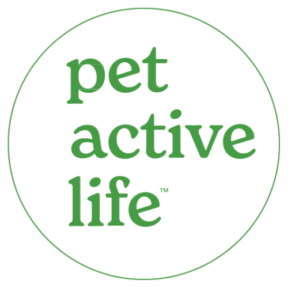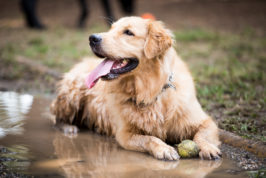Everyone knows dogs like hugs, right?
Well, not necessarily as it happens. We explore the ins and outs of cuddling up to a canine…
All dog owners want to show their pets love and affection. After all, it’s something they give us in spades. But when it comes to hugging our dogs, is it actually good for them? And, more importantly, do they enjoy it?
Do dogs like hugs?
Canines are individuals, just like us. Each one is different, with its own unique personality and quirks. That said, what’s enjoyable for one, may not be for another. Chances are, if you’ve got a dog that enjoys a hug, they’ll make it known. It’s important, though, to look out for signs that your dog isn’t a fan, and is, in fact, in distress.
Hugging a dog – what actually happens?
Let’s consider what occurs in reality when we lift a dog up for a cuddle. We might scoop them up by their armpits. We’re likely to lift them into the air, with their paws dangling towards the floor. And we’ll probably bring them close to us in a (somewhat) tight grip.
If you really think about it, the dog in question could feel physically uncomfortable, and mentally like they have little control over the situation.
Signs your dog’s unhappy
It’s crucial to look for signs that a dog isn’t responding well to a hug. The next time you spot someone hugging a dog (or you’re hugging your own), keep an eye out for the following…
- Licking of the lips
- Avoiding eye contact
- Widening of the eyes
- Showing the whites of the eyes
- Yawning
- Stiffening
- Back hair on end
- Moving their ears back and forth
- Moving their head away from you
- Shaking when you put them down
All of the above factors point towards an animal that’s ill at ease or distressed, and none of these signs should be ignored. If you see them, you’ll want to put a halt on dog hugs and look for alternative ways to show affection.
Why hugs can be bad news for dogs

When you’re hugging a dog, you’re essentially forcing them into a hold and restricting their escape route. Your dog has no idea why this is happening, or when it will end. And remember, it’s not in a dog’s nature to be confined. Quite the contrary, if you think about an animal’s natural flight mode.
There are some real watchouts when it comes to children, too. A small child may cuddle a canine in the same way that they’d cuddle a teddy bear, potentially gripping too tight and putting their face close to the dog’s (feeding their natural curiosity). This can be bad news all around.
If you combine all of the above, it’s understandable that a dog’s natural response would be to feel anxiety, panic and stress, which could lead to aggressive behaviour. Isn’t it preferable then, to show our love for our pets in other, healthier ways?
Alternatives to hugging a dog
While some dogs may love hugging, lots don’t. Here are some other ways to show love and affection…
1. Stroking
Stroking is a much gentler way to give our dog attention and show affection without the restrictions caused by full-on hugging. There are countless studies attesting to the therapeutic effects of stroking – for pets and for humans.
When you stroke your dog, your body is encouraged to release oxytocin and dopamine – also known as our ‘feel-good’ hormones. Dopamine is closely linked with feelings of satisfaction, accomplishment and pleasure. Oxytocin, on the other hand, is a hormone that encourages feelings of love and wellbeing.
It means that when we’re stroking our pets, we’re calmer, less stressed and we feel ultra-connected to them. You can apply the same rules to grooming and scratching. Although, not all dogs like those, either!
Top tip…
Most dogs don’t like being stroked on the head or the muzzle. Watch out for the tummy area, too, which can be a no-go area for some. Instead, try tickling them under the chin, scratching their chest or stroking their (lower) back.
2. Playing
Pet playtime has all kinds of gains. Physically, it aids things like heart health, joint mobility and balance and coordination. Mentally, it helps keep the mind sharp and focused How? By stimulating the brain, and encouraging skills like problem solving. It’s also great for pet-owner bonding.
3. Exercise
Whether it’s a trek along the beach or an amble through the woods, our dogs benefit from outdoor exercise in the same way humans do. It lifts the mood, improves physical fitness, promotes better sleep – we could go on and on. Not to mention that, for many dogs, it’s their favourite activity!
4. Communicating
Just because we can’t exchange words with our pets, doesn’t mean we can’t communicate with them. In fact, non-verbal body language – such as our posture, use of eye contact, gesturing, facial expressions and tone of voice – is said to make up a whopping 93% of communication. A huge opportunity then, to get across those loving feelings (minus the bear hug).
5. Giving them treats
You know that old saying, ‘food is a way to a man’s heart’? Well, swap man for dog and you’re also onto something. It’s a primal instinct. After all, in the wild, a dog would eat everything he or she could get their hands on as a means of survival. The same thinking applies here. And if it’s a tasty treat that’s good for them, all the better.
6. Being close to them
Nothing makes a dog happier than feeling relaxed in the presence of their owner. Don’t underestimate the joy of a dog in a warm, comforting environment sitting close by the ones they love, with no physical contact whatsoever.
Remember…
There are plenty of alternatives to hugging a dog, and many reasons why some find it unpleasant. Even if you’re convinced that your canine is a big fan of the cuddle, keep an eye out for signs that would suggest otherwise.




